
There were only three commemorative issues in this decade: the Victory issue, the map stamp and the Dunedin Exhibition.
Victory Issue 1920
The dies and plates were produced by De La Rue. The stamps were issued in London on 9 November 1919, but not in New Zealand until 27 January 1920. There was such an outcry in New Zealand that this did not happen again.

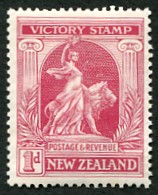
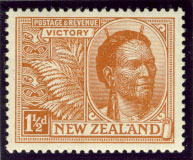

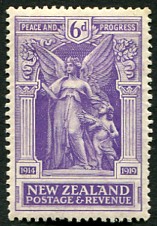
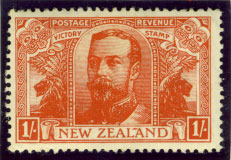
The sheets of the ½d, 3d, 6d and 1/- had 140 impressions while the sheets of the 1d and 1½d had 160. The NZ and star watermark was sideways on the ½d, 1½d, 3d and 6d and upright on the 1d and 6d. The perforation was 14.
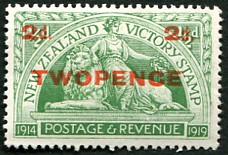
The total numbers issued were:
![]() ½d: 22,000,000
½d: 22,000,000
![]() 1d: 30,000,000
1d: 30,000,000
![]() 1½d: 46,000,000
1½d: 46,000,000
![]() 3d: 2,000,000
3d: 2,000,000
![]() 6d: 3,000,000
6d: 3,000,000
![]() 1/-: 2,000,000
1/-: 2,000,000
Up until 1920, newspapers could be sent by post at a cost of
½d, but the cost was then increased to 1d.
As there was now little demand for a ½d stamp,
12,000,000 of the ½d Victory stamp were overprinted 2d and
issued in March 1922.
Map stamp 1923
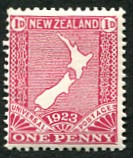
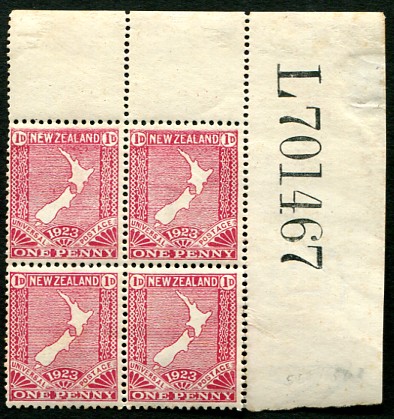
The Map stamp was issued to commemorate the restoration of penny postage. The die and plate were produced by W.R. Bock who had produced the local 1½d George V plate.
The stamps were surface printed and the first two plates were in sheets of 240. The first issue was on De La Rue chalk-surfaced paper while in March 1924, printings on Jones paper appeared.
In April 1925, stamps on Cowan unsurfaced paper were issued from a new plate which had 120 impressions.
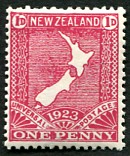
On early printings, as can be seen on the stamp on the left and in the block on the right, the top of the stamps in the top row are blurred.
To protect the top row, buffer bars were added to the top of the plate and appeared as a coloured bar in the top margin.
As the shown block has no coloured bar in the margin, it is from an early printing.
Dunedin Exhibition 1925
The New Zealand and South Seas Exhibition at Dunedin took place from November 1925 until May 1926. The stamps were designed by Linley Richardson and were only on sale at the Exhibition.
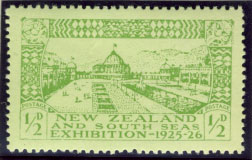
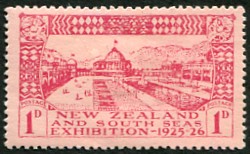
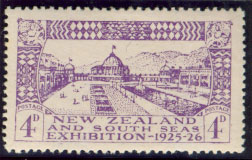
The plates were produced by etching. The paper was Cowan with the NZ and star watermark and the perforation was 14 x 15.
The total numbers sold were:
![]() ½d: 340,055
½d: 340,055
![]() 1d: 650,028
1d: 650,028
![]() 4d: 67,296
4d: 67,296
The above information is taken from The Postage Stamps of New Zealand Vols 1 and 4, published by the Royal Philatelic Society of New Zealand in 1938 and 1964. All scans were made by the author.